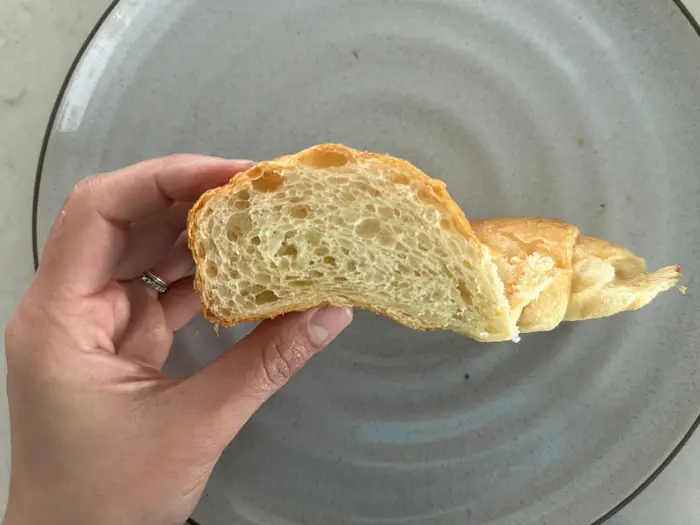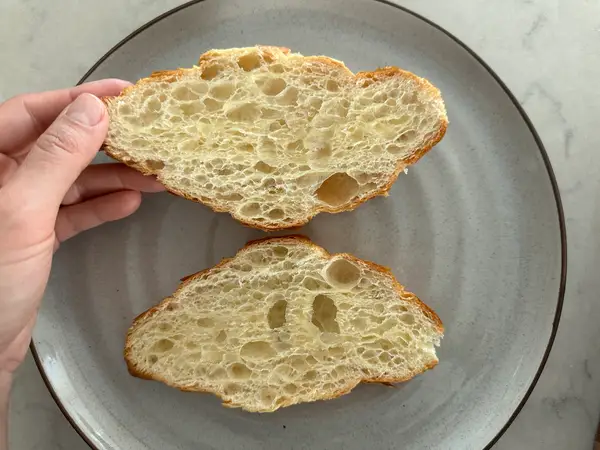I’m a private chef. After trying croissants at Key Food, Whole Foods, and Trader Joe’s, there was an obvious winner.

I taste-tested the croissants in the bakery sections at Key Food, Whole Foods, and Trader Joe’s.
I like having croissants at home for a quick breakfast for me and my daughter before work or school. They’re one of those staples I know will be enjoyed before they get moldy.
As a private chef, I know croissants are a highly technical pastry that requires a lot of time and effort. As a working mom, I don’t have either of those.
Fresh croissants from our local bakery can be expensive, about $5 to $6 each, so it’s more economical to grab a pack of four to six at the grocery store.
Here’s how the bakery-section croissants at Key Food, Whole Foods, and Trader Joe’s stack up.
Key Food is a staple grocery store throughout the boroughs of New York.

Key Food had the biggest croissants.
The first croissants I tried were from Key Food, an NYC-based chain with locations across the East Coast. A pack of four was $4.99, or about $1.25 each, which is a great deal.
The croissants were huge — easily the biggest I bought or saw at any store.
They were also slightly flat, with a pale golden-brown color.
When I cut them open, I was unimpressed with the lamination.

The interior of the croissant looked more like bread.
The Key Food croissant hardly had any lamination — thin layers created by folding butter into the dough.
There weren’t many distinct layers, and it didn’t have the crispy, airy texture I expect from a croissant.
I’ve tried Trader Joe’s croissants before.

Trader Joe’s croissants often make it into my cart at the chain.
Trader Joe’s croissants are regulars in my shopping rotation because I frequent the chain a lot.
The store sells a three-pack for $3.99, or about $1.33 each. I think that’s a great price for the quality.
The croissants were medium-sized and had a nice golden-brown color.
The croissant was fine, but it was missing a textural element.

I wish there were more of a flaky crunch on Trader Joe’s croissants.
Trader Joe’s pastries have a lovely buttery texture and slightly more lift and airiness than the Key Food ones.
However, they still lack the crackly, messy quality that is so identifiable when it comes to croissants.
I enjoy these from time to time with just some jam, but they’re not the crème de la crème.
Whole Foods’ croissant looked the most authentic.

I was happy to see some visible layers on Whole Foods’ croissant.
The last croissants I tried were from Whole Foods, where a pack of four cost $7.49, or $1.87 apiece.
Despite being the most expensive of the bunch, they were absolutely worth it.
The croissants were the perfect size — exactly as big as my hand — and had nice domed tops that gave me a peek at the layers underneath. The deep-brown exterior was also tantalizing.
Whole Foods had the closest thing to a bakery croissant.

There were nice, fluffy layers in Whole Foods’ croissants.
When I bit into the beautifully layered croissant from Whole Foods, I truly felt like I was eating a pastry, not just a piece of bread.
The flavor had a nice butteriness, but there was still that nice, slightly sour taste from the yeast.
For me, the winner was clear.

Whole Foods had the best grocery-store croissant by far.
Whole Foods was my clear and obvious winner. I’d rather have a nice pastry that’s so good I’m guaranteed to eat the whole thing than opt for a cheaper version that’s unsatisfying.
Without a doubt, I’ll be returning to Whole Foods’ bakery section for the four-pack. On weeks when I’m on a tighter budget, though, Trader Joe’s pack of three is my runner-up.
With other, better options available, I don’t think I’d buy the Key Food croissants again.






